CCO '16 P3 - Legends
View as PDFCanadian Computing Olympiad: 2016 Day 1, Problem 3
The country of Canadia consists of a network of cities and roads. Each road can be traversed in both directions. It is possible to get from any city to any other city using the roads.
Suzie studies the creation myths of the Canadiaan people. She is particularly interested in five myths (which correspond to the five subtasks of this problem). The myths are very similar. Each myth has the following form:
In the beginning, Canadia's road network had a particular structure. As time went on, the network was modified to meet the needs of Canadia's growing population. Each modification had one of the following forms:
- A road was built between two cities that did not yet have a road going directly between them.
- A new city was built. Cities built in this way were not initially connected to any existing cities.
- A city
 becomes
becomes 
The five myths only differ in the structure that they believe Canadia began with. Here are the original structures, according to each myth:
| Subtask 1 [The Myth of the Flask] | Subtask 2 [The Myth of the Moon] |
|---|---|
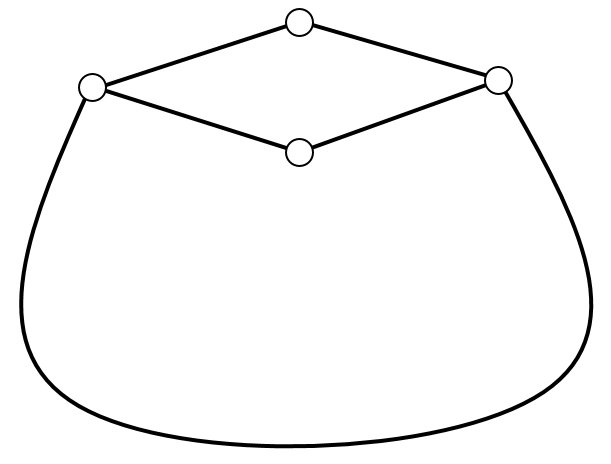 |
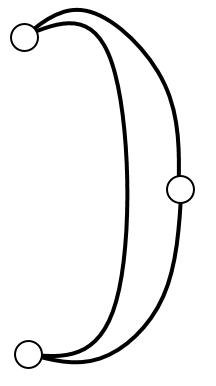 |
| Subtask 3 [The Myth of the Sun] | Subtask 4 [The Myth of the Eagle's Talon] |
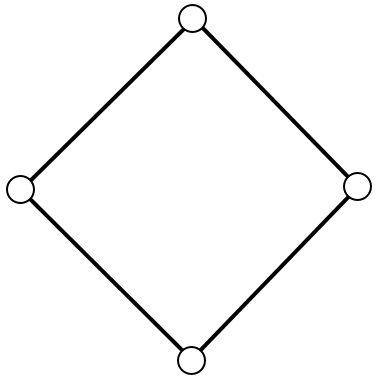 |
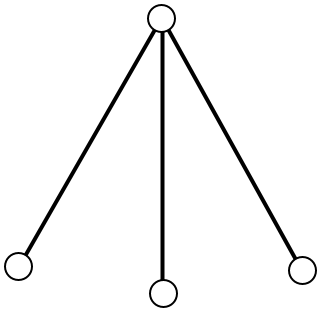 |
| Subtask 5 [The Myth of the Fox] | |
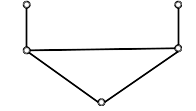 | |
For each subtask, you must take the layout of Canadia as input and determine whether the myth might be correct.
Subtasks are worth 5 marks each.
Input Specification
The first line contains a single integer
In subtask 3, you may assume that the sum of
The same condition holds for
Output Specification
For each test case, output a single line containing the string YES or the string NO.
Sample Input 1
1
2
4 5
1 2
2 3
3 4
1 3
2 4
7 8
1 2
2 3
3 4
4 1
4 5
5 6
6 7
7 4Sample Output 1
YES
NOExplanation for Sample Output 1
| Test Case Number | Network | Explanation |
|---|---|---|
| 1 |  |
matches The Myth of the Flask |
| 2 | 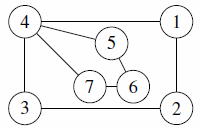 |
cannot match The Myth of the Flask |
Sample Input 2
2
2
2 1
1 2
5 6
1 3
5 1
2 3
4 5
1 2
3 5Sample Output 2
NO
YESExplanation for Sample Output 2
| Test Case Number | Network | Explanation |
|---|---|---|
| 1 | 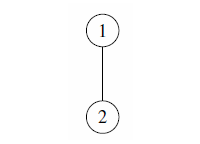 |
cannot match The Myth of the Moon |
| 2 | 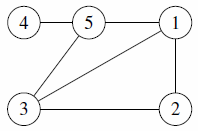 |
matches The Myth of the Moon, since we can add cities 4 and 5 along with some extra roads to the Moon formed by cities 1, 2 and 3. |
Sample Input 3
3
2
7 8
1 2
2 3
3 4
4 1
4 5
5 6
6 7
7 4
8 8
1 2
2 3
3 4
4 5
5 6
6 1
7 3
8 7Sample Output 3
YES
YESExplanation for Sample Output 3
| Test Case Number | Network | Explanation |
|---|---|---|
| 1 | 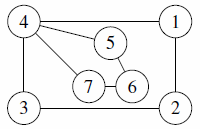 |
can match The Myth of the Sun, on cities 1, 2, 3 and 4 |
| 2 | 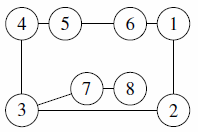 |
can match The Myth of the Sun, on cities 1, 2, 3 and 4 where some new cities have been inserted between cities 1 and 4 |
Sample Input 4
4
2
4 4
1 2
2 3
3 4
4 1
6 6
1 2
2 3
1 4
4 5
2 4
1 6Sample Output 4
NO
YESExplanation for Sample Output 4
| Test Case Number | Network | Explanation |
|---|---|---|
| 1 | 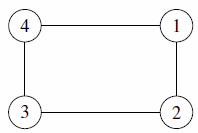 |
cannot match The Myth of the Talon |
| 2 | 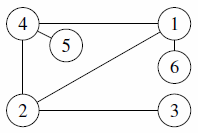 |
can match The Myth of the Talon on cities 1, 2, 4 and 6 |
Sample Input 5
5
2
5 5
1 2
2 3
2 4
4 5
3 5
6 6
1 2
2 3
1 4
4 5
2 4
1 6Sample Output 5
NO
YESExplanation for Sample Output 5
| Test Case Number | Network | Explanation |
|---|---|---|
| 1 | 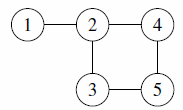 |
cannot match The Myth of the Fox |
| 2 | 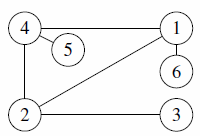 |
can match The Myth of the Fox, on cities 1, 2, 4, 5 and 6 |
Comments
Any hints for subtask 3? I've spent at least over 36 hours on this single subtask, and I am actually so done with this question. Replying to this comment or on Discord is fine. All I want is a hint on what the algorithm is.
Quick question for subtask 1, if there was
Would that be a YES or a NO as the correct output?
EDIT: Nevermind, got it.